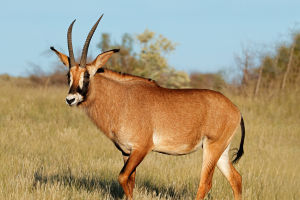The camel, "ship of the desert," has become an indispensable companion in the arid deserts due to its remarkable adaptability and survival strategies.
Its physiological structure, behavioral habits, and environmental adaptations command deep admiration.
Firstly, the camel's physiological structure enables it to survive in extreme environments. There are two main types of camels: the dromedary and the Bactrian camel. The dromedary primarily inhabits North Africa and the Middle East, while the Bactrian camel is found mainly in Central Asia.
Contrary to popular belief, the hump does not store water but rather fat. This fat storage mechanism allows camels to sustain vital functions for an extended period in food-scarce environments. By breaking down the fat in their humps, camels can obtain energy and moisture, enabling them to survive for weeks without food or water.
Another crucial adaptation is their unique temperature regulation mechanism. In the high temperatures of the desert, camels can adjust their body temperature to reduce moisture loss. Their body temperature can rise to 41°C (106°F) during the day and drop to 34°C (93°F) at night. This temperature fluctuation effectively minimizes internal water evaporation. Additionally, camels' urine is highly concentrated and their feces are dry, which further helps them conserve water.
Access to water is also key to survival in the harsh desert environment. Camels can drink large quantities of water at once and can store moisture in their bodies for up to several weeks. Their drinking mechanism is unique, allowing them to rapidly replenish their water supply without a gradual process. Camels have multiple stomach chambers that effectively digest and absorb moisture and nutrients, maximizing the benefits of drinking water in a short period.
Behaviorally, camels also display exceptional survival strategies. In the desert, they often move in groups, which not only provides safety but also helps them locate scarce food and water sources. Camels have keen eyesight and a strong sense of smell, enabling them to detect water from afar. They also possess a unique ability to find food, using their long, flexible lips to eat various drought-resistant plants, including thorny vegetation that other animals cannot consume.
Camels' fur is another aspect of their survival. It effectively protects them from the harsh desert sun and extreme temperatures. Their fur has excellent insulating properties, blocking heat during the hot days and providing warmth during the cold nights. The color of their fur also helps reflect sunlight, reducing the rise in body temperature.
The importance of camels in the desert extends beyond their biological adaptations. Historically, they were crucial transportation tools in desert regions, facilitating trade and migration. Their endurance and carrying capacity made them ideal for desert exploration and transportation. Furthermore, camels provide valuable economic resources such as milk, meat, and hides, playing a significant role in the lives of desert inhabitants.
In summary, camels are miraculous creatures within the desert ecosystem. Their tenacity and exceptional adaptability have made them legendary beings of the desert, evoking our awe and appreciation for the wonders of nature.


